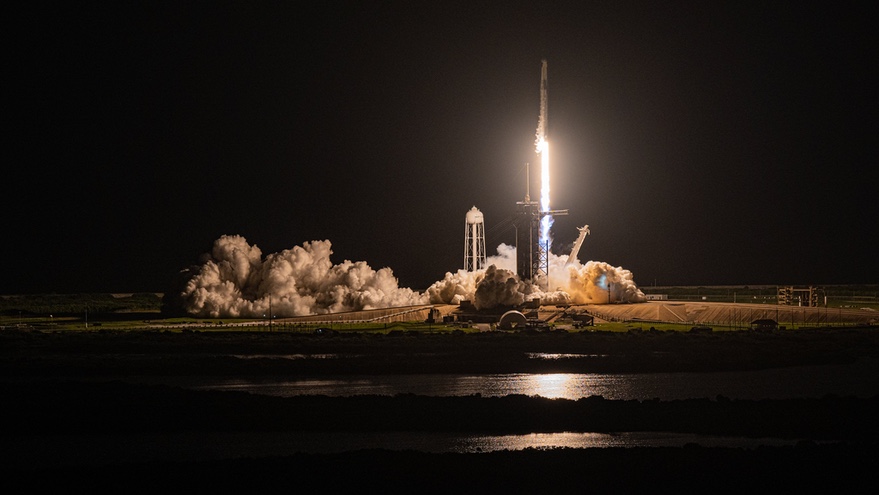Products You May Like
More than 50 people are recognized by the Federal Aviation Administration for traveling to space and back on commercially licensed vehicles, and forecasts indicate the list will continue to grow. Remarkably, the United States lacks continuous oversight throughout commercial human spaceflight. To ensure the safety of spaceflight travelers from launch to landing, the United States should consider the continuity of a single executive agency overseeing commercial human spaceflight activities. After all, hazards do not stop at the Kármán line.
The FAA regulates commercial aviation through all phases of flight. FAA’s oversight of air travel is not limited to the riskiest phases of takeoff and landing. While cruising at high altitudes has fewer incidents, FAA does not transition responsibility after takeoff. A continuous chain of custody secures the safety of passengers and bolsters confidence in commercial aviation, a well-established U.S. industry carrying over 670 million passengers in 2021.
Last year was stellar for space tourism, with Virgin Galactic, Blue Origin, SpaceX, and Axiom accomplishing a feat once only realized through government agencies, in particular NASA. While the global space tourism market is expected to continue to grow, it’s interesting to note commercial spaceflight is handled differently than commercial aviation flights. The FAA oversees commercial spaceflight safety during launch and reentry, but operations outside the atmosphere in space are not part of their regulatory authority. The current regulatory regime requires commercial companies seeking to launch in the United States to work with multiple regulators.
Regulatory complexity for human spaceflight will grow when the moratorium on regulation of commercial spaceflight, or “learning period,” expires. The moratorium is scheduled to expire in less than a year, on Oct. 1, 2023. Even when the moratorium ends, FAA’s authority to regulate passenger safety will only be during launch and reentry. Compared to aviation flights, this is equivalent to the FAA overseeing commercial takeoffs, either relinquishing authority or ceding authority to another agency during cruise and then taking responsibility again upon landing.
Recognizing commercial human spaceflight in the U.S. is a fast-growing sector, it is unlikely to be devoid of on-orbit safety oversight indefinitely. Commercial human spaceflight companies clearly indicate a commitment to safety as inherent to business success and convey that safety is “baked into” their processes. However, experience from other transportation sectors shows pressures in a growing industry can impact commitments to safety.
The space industry is expanding in multiple sectors. Beyond human spaceflight, companies are outpacing current U.S. oversight authorities through robotic innovations, including in-space servicing, assembly, and manufacturing. Intending to simplify matters, the U.S. government has explored concepts such as a single comprehensive “Mission Authorization” for on-orbit activities. While the FAA initially expressed interest in taking on such an authority, the previous presidential administration shifted the focus of authority for space missions to the Department of Commerce. Congress remains divided over whether to adopt Mission Authorization, as well as where to place that authority. The lack of progress in these debates suggests a need for a new approach.
Let’s explore a concept that could simultaneously break the political logjam, provide a streamlined framework, and promote commercial spaceflight safety. Instead of using a political machete to find the right agency to cover everything in one “Mission Authorization,” let’s consider using a scalpel and carve out specific authorities to agencies best suited to implement them. The U.S. could adopt a policy of “Selective On-orbit Authority,” assigning the FAA the role of overseeing the safety of commercial human spaceflight for the duration of flight and assigning oversight of robotic missions to the Department of Commerce. This will ensure future commercial spaceflights benefit from a continuous chain of custody, provide a single-entry point for licensing, and promote passenger safety throughout all phases of flight – including safely enjoying cruising above the Kármán line.
This idea has precedent. Selective On-orbit Authority has been successfully applied to robotic space activities for commercial remote sensing operations through the Department of Commerce and telecommunications satellites through the FCC. Assuring the safety of people on commercial human spaceflights is complex. Passenger safety is important enough to merit a single authoritative body that benefits from experts within one agency, limits bureaucracy, and encourages commercial companies to deliver innovative and safe solutions.
Josef Koller is a senior analyst at the Aerospace Corp.’s Center for Space Policy and Strategy. Carson Coursey is an Aerospace Corp. astrodynamics intern, a Georgia Institute of Technology student and Matthew Isakowitz fellow.
This article originally appeared in the December 2022 issue of SpaceNews magazine.
